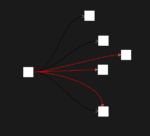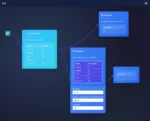
by tyler garrett | May 21, 2025 | Data Processing
In the era of data-driven innovation, organizations face critical decisions when architecting data solutions, particularly around how they store and process vast quantities of structured and unstructured data. Traditional data lakes provided flexibility but struggled with transactional integrity and performance predictability. Enter a new generation of transactional data lakes: Delta Lake, Apache Iceberg, and Apache Hudi. Each technology aims to solve critical problems such as consistency, reliability, performance, and governance. However, choosing between them can be challenging, especially as your organization’s needs evolve. As experts focused on helping enterprises leverage cutting-edge data solutions, we want to simplify that decision. In this blog, we’ll explicitly compare Delta Lake, Apache Iceberg, and Apache Hudi, assessing their strengths, ideal use cases, and disadvantages—providing clarity for technical decision-makers aiming to invest strategically and drive meaningful data-driven innovation.
Why Transactional Data Lakes?
Historically, the flexibility and scalability of traditional data lakes made them popular for storing vast amounts of data. Unfortunately, they lacked the robust transactional integrity necessary for enterprise-grade reliability. Issues such as data inconsistency, error-prone manual table management, and complex schema evolution presented significant obstacles. Transactional data lakes emerged to address these challenges by integrating ACID transactions, schema enforcement, and automated data governance directly into data lake architecture. These innovations enable organizations to build analytics-ready data stores with heightened performance, governance compliance, and reliable storage patterns. Additionally, by adopting a transactional architecture, organizations can dramatically simplify data contract-driven approaches to team alignment, realizing clearer accountability structures and enhancing collaboration among data producers and consumers.
Transactional data lake formats such as Delta Lake, Iceberg, and Hudi excel at integrating structured data warehouse characteristics into flexible lake storage strategies—meeting growing enterprise needs for agility without sacrificing consistency. With increased demand for advanced analytics, real-time streaming data, and executive dashboards driving insightful decisions, reliable transactional data lakes are essential. As these patterns evolve, tools like Delta Lake, Iceberg, and Hudi have matured significantly, prompting a deeper comparison to understand their strengths and practical applications clearly.
Delta Lake: Enhanced Reliability with Structured Transactions
Overview and Strengths of Delta Lake
Created by Databricks, Delta Lake has rapidly become a mainstream solution thanks to robust ACID transaction support, data reliability improvements, and optimized query performance. At its core, Delta Lake organizes data into structured, columnar formatted Parquet files, augmented by a transaction-grade metadata log. This system ensures consistency and durability across batch or streaming sources, helping enterprises unlock reliable and performant analytics capabilities. Delta Lake simplifies schema enforcement, which resonates with teams adopting data contract-driven development methodologies, ensuring integrity and facilitating smooth collaboration between data producers and consumers.
Delta Lake shines with built-in support for time-travel queries, enabling historical analysis of data revisions and audits. Moreover, its architecture fosters effective data partitioning, efficient SQL syntax, and fast incremental data updates, considerably enhancing analytical agility. Delta Lake’s integration with Spark and robust query optimization features position it strongly as an enterprise-ready solution, especially for organizations already deeply investing in Apache Spark or Databricks ecosystems.
Challenges and Considerations for Delta Lake
While Delta Lake is well-suited for enterprises leveraging Spark ecosystems, organizations outside this context may discover integration complexities. Metadata management is tied closely to Databricks or Spark-specific logic, making it less portable or easily extensible to other query engines or storage backends compared to alternatives like Apache Iceberg. Companies with polyglot environments, using multiple analytics tools simultaneously, might consider evaluating alternative transactional lake formats or seek guidance from specialized consultants who can facilitate compatibility and integration complexities, similar to how expert consultants address integration challenges with their MySQL Consulting Services.
Apache Iceberg: Versatile and Engine-Agnostic
Overview and Strengths of Apache Iceberg
Apache Iceberg distinguishes itself as an open and community-driven, scalable table format built for transactional capabilities and massive-scale analytics. Iceberg’s outstanding feature is its engine-agnostic architecture, which separates the metadata layer from the storage layer. This critical element grants flexibility to leverage multiple analytical engines concurrently, minimizing vendor lock-in and enabling more comprehensive analytics through polyglot visualization approaches.
Iceberg caters especially well to collaborative and diverse enterprise analytics ecosystems. With robust support for both schema evolution and time-travel analytics, Iceberg provides functionality on par with Delta Lake, without the reliance on a single computation engine. Furthermore, Iceberg excels at the automation of data compaction and efficient columnar storage, making it suitable for analytics-heavy workloads in large-scale environments where performance and scalability are critical concerns.
Challenges and Considerations for Apache Iceberg
While Iceberg provides excellent cross-compatibility and flexibility, operational complexity can be a potential concern for teams less familiar with open-source, modular architectures. Iceberg requires investment in comprehensive planning, integration, and governance strategies to fully realize its benefits. Therefore, adopting Iceberg often involves partnering with skilled technical strategists or internal experts adept at best-in-class practices such as hexagonal architecture for data platforms. Properly executed, these strategies result in enormous flexibility but require additional resources upfront for platform engineering and integration work.
Apache Hudi: Real-Time Analytics and Streaming Optimization
Overview and Strengths of Apache Hudi
Developed at Uber, Apache Hudi (short for Hadoop Upserts Deletes and Incrementals) fills a distinct niche around optimized streaming analytics and near real-time data ingestion, making it particularly attractive for managing event-driven architectures and streaming data platforms. Hudi provides both Copy-On-Write (COW) and Merge-On-Read (MOR) table types, enabling teams to easily define reliability and latency trade-offs based on specific workload drivers. Its transactional nature helps significantly with data consistency, ensuring that incoming data streams from complex or variable volumes are managed seamlessly, similar to robust backpressure handling in data streaming architectures.
Apache Hudi is frequently the go-to solution for enterprises needing upsert-heavy transactional workloads at low latency, such as IoT applications, financial services, and real-time usage audits. Its strengths in incremental and streaming ingestion allow for achieving near real-time analytics results and precise data-driven decision-making in dynamic operational contexts.
Challenges and Considerations for Apache Hudi
While Hudi excels for streaming contexts, operations involving batch analytics or strategic long-term analytics storage might benefit more from Iceberg’s flexibility or Delta Lake’s integration simplicity. Enterprises leaning heavily into batch-oriented pipelines might find complexity increases and operational overhead when using Hudi, making Hudi particularly suited for real-time and event-driven scenarios. Engaging with trusted data strategists on integrating batch and real-time warehouse concepts, or consulting popular beginner resources such as A Beginner’s Guide to Data Warehousing, can help teams strategically optimize their transactional lake selection.
Making the Right Choice: Delta Lake vs. Iceberg vs. Hudi
Ultimately, the decision between Delta Lake, Iceberg, and Hudi hinges on your organization’s specific objectives, technical constraints, and operational capabilities. Delta Lake aligns strongly with enterprises deeply invested in Apache Spark and Databricks ecosystems, ensuring reliable, performant outcomes efficiently. Iceberg’s broader compatibility and openness appeal to multi-engine analytics ecosystems searching for flexibility and avoiding vendor lock-in. Alternatively, Hudi thrives in delivering low-latency transactional ingestion analytics, making it most suitable for event-driven use cases.
Regardless of your approach, aligning your data strategy with advanced principles like automated data testing strategies for continuous integration ensures analytical reliability and governance best practices across your chosen transactional data lake platform.

by tyler garrett | May 21, 2025 | Data Processing
In today’s rapidly evolving digital landscape, organizations accumulate vast volumes of data, making distributed processing a necessity rather than a choice. Yet, while distributed data environments scale impressively, they also introduce complexities, notably data skew. Data skew happens when uneven data distribution leads some processing nodes to shoulder heavier workloads, causing inefficiencies and bottlenecks. For data-driven businesses, such performance pitfalls not only interrupt operations but also hinder their ability to leverage predictive analytics, real-time reporting, and frameworks for data-driven decision making. Recognizing and effectively resolving data skew is thus essential for businesses aiming to maximize the efficiency of their distributed data platforms, empower agile and informed strategies, and ultimately impact competitive positioning significantly. How can your organization practically detect data skew early and address it swiftly before it impacts critical business outcomes?
Understanding Data Skew: The Root Problem in Distributed Data Systems
Before diving into techniques to mitigate data skew, it’s critical to understand precisely what it is and why it emerges as a significant issue within distributed data environments. Distributed data processing systems, such as Apache Spark and Hadoop, allocate tasks across multiple nodes or clusters, splitting heavy workloads to improve efficiency. Ideally, data should distribute evenly, ensuring that all nodes carry roughly equal burdens.
However, reality rarely conforms neatly to this ideal setup. Data skew occurs when one or more nodes receive significantly larger workloads compared to others. Common scenarios causing data skew include uneven data distribution, improperly selected partitioning keys, or insufficient data preprocessing efforts. Such imbalance leads to significant degradation of performance, as certain nodes become overloaded while others remain idle. Consequently, queries or analytical tasks can slow dramatically, costing businesses valuable time and resources. As businesses increasingly depend on near-real-time insights and effective data visualization practices to support strategic decisions, performance bottlenecks caused by data skew pose major threats to operational efficiency.
Skewed data doesn’t only slow down queries and analytics. It can potentially distort outcomes of complex analyses, especially if your team uses advanced data analytics techniques and multi-modal data fusion strategies. Recognizing that data skew isn’t merely a technical nuisance but a fundamental threat to accurate business intelligence is the first step towards resolving it.
Detecting Data Skew: Key Indicators and Methods
Efficiently handling data skew begins by accurately identifying its presence. Various symptoms indicate potential skew issues—these include uneven CPU rather than uniformly utilized resources, prolonged data processing tasks that significantly exceed normal execution times, or nodes consistently hitting memory or I/O limits. Fortunately, numerous sophisticated tools and strategic methodologies can aid your team in promptly detecting such abnormalities.
Proactive system monitoring offers the quickest way to surface signs of data skew. Analytics platforms such as Apache Spark offer built-in interfaces for monitoring cluster performance metrics. Tools like Datadog or Grafana, combined with Prometheus, provide dashboards clearly illustrating node utilization, enabling data engineering teams to identify quickly which nodes exhibit disproportionately heavy workloads. Additionally, examining Spark’s UI visualization utilities allows engineers to spot significant variances in task durations across different nodes easily.
A robust diagnostic approach combining automated monitoring tools with manual log analysis will greatly increase the probability of early detection. Periodic audits, combined with real-time visualization of distributed processing workloads, let your team proactively uncover underlying distribution issues. Developing internal competence around database queries and data engineering fundamentals like SQL SELECT statement fundamentals or Python scripting can further empower your technical team to rapidly spot skew before it becomes problematic.
Regularly performing data audits and closely monitoring distribution statistics will position your team ahead of potential disruptions, aligning your data platform’s capabilities more closely with broader organizational innovation strategies and use cases for data-driven businesses.
Strategies to Efficiently Handle Data Skew
Once the skew is recognized, organizations must decide how best to address and manage it effectively. The methodologies used in handling data skew typically fall within three overarching categories—data preprocessing, partitioning improvements, and the implementation of skew mitigation algorithms.
1. Data Preprocessing Techniques
Investing time and effort in data preprocessing significantly mitigates skew issues before they disrupt downstream tasks. Techniques such as filtering records appropriately, removing outliers, reshaping massive tables, and performing data normalization often ensure a more balanced data distribution. Data engineers often prefer languages like Python for such preprocessing; indeed, this fits directly with our recent discussion about why Python offers advantages over Tableau Prep for data pipelines. Data preprocessing proactively prevents operational scenarios where skew can negatively impact critical analytical procedures.
2. Data Partitioning Strategies
Better initial partitioning represents another strategic solution to combat skew. Optimizing data partition keys and employing efficient hashing strategies ensure data divides more evenly across nodes. Leveraging modern partitioning schemes that distribute workloads strategically is crucial. Robust frameworks for designing your distributed systems can be supported by understanding suitable partitioning. Smart architecture utilizing concepts detailed in our previous blog comparing polyrepo vs. monorepo strategies will allow enterprises to embed skew prevention into their overall data platform design.
3. Algorithmic Skew Mitigation Solutions
When preprocessing and partition optimization prove insufficient, organizations may deploy analytical algorithm upgrades specifically designed to resolve skew on-the-fly, such as SkewJoin or Salting techniques. Implementing such innovative solutions requires collaboration among team members, who clearly understand emerging data science techniques, data pipeline operations, and the right balance between performance optimization and code maintainability.
The Crucial Role of Collaboration: Engineering, Analytics, and Business Stakeholders
Effective management of data skew requires the collaborative effort of multiple distinct yet united team members. The role distinction between technical contributors, such as data engineers and analysts, must be understood clearly. For further insights, take a closer look at our explanation of the differences between a data engineer and a data analyst. Clear delineation empowers each role to participate optimally in recognizing, diagnosing, and resolving skew.
Business analysts and leadership must weigh potential investment in technical solutions commensurate with the potential pitfalls of unresolved skew. Data visualization experts must clearly communicate skew-related bottlenecks, leveraging strategic visual storytelling best practices and data visualization best practices to ensure affected business units understand the significance of addressing skew issues proactively.
A Future-Proof Approach to Data Skew in Your Distributed Systems
Effective skew detection and handling require not only technological strategies but a thoughtful alignment of engineering capabilities, analytical business needs, and organizational decision-making. Deploying a forward-thinking approach means adopting well-measured strategies and continuously investing in internal technical competence. By doing so, you future-proof your organization’s analytical capabilities and competitive advantage.
For example, addressing skew issues rigorously allows data teams to reliably support critical decision-making initiatives, such as investigating Austin’s housing affordability crisis through data analytics or empowering decision-making through advanced methodologies such as causal inference frameworks for business decision support. Ultimately, proactive and intelligent handling of data skew will consistently translate to better-informed business choices and greater agility in the marketplace.
Mastering skew detection and managing solutions effectively today can mean significant business performance increases, safeguarding your organization’s ability to consistently innovate in data, analytics, and technology.

by tyler garrett | May 21, 2025 | Data Processing
In today’s fast-evolving data landscape, the push toward automation has never been stronger. Companies aim to streamline workflows, gain rapid insights, save on costs, and deliver quality products faster than before. Yet, fully automating complex data-driven workflows isn’t always possible or advisable. Behind every notable algorithm and dataset, there’s the indispensable touch of human expertise. That’s where “human-in-the-loop” (HITL) data pipeline design patterns come into play. Powered by reliable data systems, thoughtful integration of human intelligence, and strategic analytics infrastructure, HITL systems can revolutionize the way your organization interprets, manages, and leverages data assets. Let’s explore the design patterns, best practices, and strategic implications of human-in-the-loop data pipelines, illuminating pathways toward innovation and continuing competitive advantage.
Understanding Human-in-the-Loop Data Pipelines
At a fundamental level, a human-in-the-loop data pipeline is a workflow architecture integrating human decision-making steps into automated processes. Solely machine-driven pipelines work wonders in scenarios involving clear business rules or tasks requiring predictable outcomes. However, in cases requiring nuanced decision-making, subjective interpretation, or complex judgments, entirely automated pipelines may lead to inaccuracies, risks, or oversight.
Integrating human review or validation into data pipeline workflows is particularly essential for critical industry sectors such as finance, healthcare, and compliance. By combining automation with human oversight, enterprises ensure quality control, reduce inaccuracies, and leverage expert judgment where automated algorithms still fall short.
A robust example is anomaly detection processes within financial systems. Algorithms can flag transactions as potentially fraudulent based on patterns—but typically, human analysts need to examine flagged incidents to make final determinations. The strategic injection of human intelligence ensures precise business decision-making, compliance adherence, and customer-centric outcomes, even amid the complexity of large-scale transactions.
Essential Human-in-the-Loop Pipeline Design Patterns
Pattern 1: Human Judgment Integrated Data Validation
This pattern involves automated data validation complemented by a manual approval or rejection workflow. Automated validation processes can quickly process high-volume data, flagging data points that exceed predefined thresholds or deviate from expected behaviors. However, certain decisions, like verifying authenticity of critical business datasets or handling ambiguous data scenarios, often require human judgment.
Utilizing these validation models maximizes accuracy because humans can catch anomalies automation might overlook, preventing propagation of faulty data downstream. The schema usually adopts visual interfaces enabling users to clearly identify data discrepancies and provide direct input. Employing high-performing analytics tools and visualizations can profoundly enhance this pattern. For those looking to compare visualization techniques, we recommend our recent blog article Comparing Data Visualization Techniques.
Pattern 2: Human-Supported Learning and Feedback Loops
True strength in human-in-the-loop systems involves periodically refining machine learning models based on human feedback. This feedback loop creates a virtuous cycle: predictive algorithms provide suggestions, humans evaluate or correct outputs, and insights from human judgment feed back into models to improve accuracy over time.
Consider customer support analytics, where automated sentiment analysis classifies feedback. Misclassifications or nuanced cases requiring deeper interpretation can be routed to human reviewers. Human inputs subsequently retrain the algorithm, enhancing analytical accuracy in future iterations. Adopting such a cyclical approach leverages continually improving data operations maturity—a topic we explore deeper in our guide DataOps Maturity Assessment: Where does your Organization Stand?.
Pattern 3: Exception Handling Escalation Model
In highly automated pipeline workflows, there will inevitably be outliers or exceptions—unexpected results or errors flagged during processing. Rather than halting the entire pipeline or leaving automation to guess, setting up exception escalations with input from domain-specific experts is a key component in HITL strategies.
For instance, in mission-critical environments like healthcare or finance, automated data ingestion processes encountering suspicious or uncertain records trigger human review workflows, escalating these data points to expert analysts. This prevents costly errors in processes downstream and maintains compliance. Businesses investing extensively in exception handling models often need advanced database strategies. For deeper insights, consider checking our dedicated resource on relational database solutions: MySQL Consulting Services.
Technologies Driving Human-in-the-Loop Pipelines
Implementing HITL pipelines requires a comprehensive technology stack, ranging from big data platforms and machine learning frameworks to collaborative workflow tools. Effective technology selections depend on the type and complexity of data processed, as well as your organization’s precise goals and budget considerations. Given rising costs associated with software subscriptions, it’s wise to choose tools carefully, as covered in our piece The SaaS You Picked Yesterday Will Be More Expensive Tomorrow.
Technologies worth noting include machine learning algorithms combined with big data platforms like Apache Spark for data processing at scale, data visualization software like Tableau, Power BI, or Looker to efficiently enable human analysts, and collaborative tools like Jira or Slack to streamline human workflows. Data analysts deeply benefit from mastering these technologies, as discussed extensively in our guide, The tools and technologies used for Data Analytics.
Benefits and Challenges of HITL Pipelines
HITL pipeline designs confer many strategically important advantages. Teams gain accuracy improvements over purely automated pipelines, as humans refine data quality and correct biases. Integrating human insights also adds flexibility—when business, market, or technological factors change rapidly, human intervention can help quickly adapt automated pipelines.
Yet, there are challenges to effectively implement HITL pipelines. Many systems are susceptible to operational bottlenecks if not designed correctly; for example, human analysts who minimize the value of automation by manually addressing tasks technology should expedite. Additionally, human-made errors can hinder pipeline efficiency, requiring clear governance policies and safeguards, such as alert-based threshold controls—something our recent troubleshooting resource helps illustrate vividly: Resolving Error 1084 Troubleshooting Guide.
A structured approach to human engagement, clearly defined human roles, and optimization of workflows through suitable technology can turn these challenges into manageable hurdles on your path toward analytics excellence.
Strategically Implementing Human-in-the-Loop Data Pipelines
When organizations embrace HITL pipeline design, careful strategy becomes critical. Business leaders and strategic decision-makers must first pinpoint the exact areas where human judgment adds significant, undeniable value. Early integration of analytics professionals during pipeline creation further secures analytics buy-in and prepares teams to effectively utilize HITL functionality. For professionals engaged in these design strategies, networking effectively with data science specialists is essential—our resource on the art of networking with data science professionals provides actionable insights.
Data visualization, collaborative software adoption, workflow clarification, and continuous feedback loops are critical drivers ensuring your HITL model remains relevant, robust, and productive, especially during uncertain market dynamics. Business agility demands staying ahead of technical trends and developments—as explored thoroughly in our recent article, The Increasing Importance of Data Analysis in 2023.
The net improvement when strategically adopting HITL pipelines fosters innovation, ensures compliance, delivers improved customer experience, and perpetually keeps your data analytics accurate, insightful, and transformative.
Conclusion
Adopting human-in-the-loop data pipeline designs is no longer optional if your enterprise aims for optimal insight fidelity, robust data accuracy, and continuous technological improvement. Although challenges and considerations exist, strategically embracing these design patterns augments business resilience, enhances data strategy sophistication, and sharpens competitive positioning. From effectively handling complex data workflows to bolstering innovation, remember—advanced analytics & innovation demand a collaborative blend of technology and human judgment.

by tyler garrett | May 21, 2025 | Data Processing
Harnessing user activity data is pivotal for informed decision-making, providing organizations actionable insights into customer behavior, product effectiveness, and strategic optimization opportunities. However, extracting meaningful analysis from continuous, fluctuating data streams requires a sophisticated approach to data handling. Implementing session windows transforms raw user events into valuable analytics by segmenting continuous user actions into logically grouped periods of activity. By mastering session window implementation, companies position themselves strategically to interpret user interactions precisely, improving customer engagement, resource allocation, and ultimately driving revenue. In this technical exploration, we delve deeply into the concept of session windowing, highlighting practical methodologies and strategic considerations essential to leverage user activity data effectively. Whether you’re managing data initiatives internally or collaborating with expert consultants, understanding session windows significantly enhances your data analytics maturity.
Understanding Session Windowing: A Foundation for Enhanced Insights
Session windowing, a temporal data aggregation concept, involves grouping user activity based on specific time intervals or user interaction pauses to form coherent analytical units. These dynamic windows delineate meaningful user sessions, allowing organizations to grasp behavioral patterns effectively. Rather than relying solely on fixed time periods that risk cutting off user events unnaturally, session windowing considers user interaction continuity, replicating genuine user experiences.
Modern analytics increasingly depends on accurate data alignment approaches, such as effective cross-modal data alignment techniques, that enable stakeholders to unite disparate datasets seamlessly into cohesive insights. Employing session windows similarly enriches your data context, especially concerning customer analytics, digital marketing, and online product sessions. Strategically constructed session window analytics yield clearer path-to-purchase insights, abandonment rates, interaction density, and overall engagement quality.
Furthermore, session windowing unlocks robust analyses across different types of analytics frameworks—a topic extensively covered in our article regarding types of data analytics. Whether pursuing descriptive, diagnostic, predictive, or prescriptive analytics, clearly defined time-based sessions provide superior visibility into customer intents, preferences, and user journey specifics. By embracing this method, organizations improve their analytics response effectiveness and foster robust understanding of their audience segments.
The Technical Mechanics Behind Session Window Implementation
Session window implementation requires careful consideration of several technical components. Principally, the analytics platform you choose must support flexible time windows, adjustment capabilities, and scalable streaming data handling features. Platforms such as Apache Kafka, Apache Flink, Google Cloud Dataflow, or Amazon Kinesis are examples possessing robust capabilities suitable for session window logic. Selecting the correct platform depends significantly on your organization’s existing ecosystems, scalability expectations, and recommended practices—criteria that align closely with the considerations outlined in our guide: questions we always address before writing code.
Technically, session window creation involves two primary components: time interval management and event sequencing. Systems must distinguish user activities quickly and associate individual user-generated events correctly into sessions. Typically, a session window expires after predefined inactivity thresholds—a fundamental parameter designed according to your analytics objectives. For instance, identifying user drop-off versus active browsing may prompt different inactivity thresholds; 5-minutes for high-engagement activities against 60-minutes intervals for broader content exploration analyses.
Additionally, it remains vital to incorporate comprehensive identity resolution mechanisms. Accurate, consistent identification of users across multiple sessions and platforms determines the effectiveness of your analytics. Identity resolution enhances session window integrity, allowing analytics teams to analyze activity granularly, refine understanding of interaction components, and achieve real-time responsiveness in customer experience strategies.
Real-life Use Cases and Industry Examples of Session Window Analytics
Successful session window implementations offer a wealth of strategic benefits verified by real-life industrial examples. Leading e-commerce businesses maximize revenue by reducing cart abandonment through insights gathered from session-based analytics, effectively pinpointing factors leading to purchase hesitation. In digital advertising, publishers utilize session windowing to analyze visitor engagement duration and content exposure frequency, fine-tuning promotions accordingly.
Consider data-rich companies thriving within dynamic startup ecosystems—especially those operating near tech hubs like Austin, Texas. As detailed in our article exploring how Austin-based companies utilize analytics effectively, many leverage session window insights to optimize user experience improvements strategically. Locally successful digital product teams use these insights to dynamically retarget users, segment marketing appropriately, and drive personalized engagement strategies to achieve higher conversion metrics across marketing funnels.
Operational analytics further benefit from session windowing solutions. For companies managing vast data stores and needing data warehousing solutions, exploring session-based analytics supports more precise prediction of resource utilization spikes and proactive resource provisioning—topics covered within our service offering related to data warehousing consulting services. By accurately aggregating data streams into coherent, session-defined units, teams facilitate enhanced real-time insights for improved operational clarity, facilitating proactive business decisions rather than reactive responses.
Common Challenges in Session Window Implementation and How to Overcome Them
While session window analytics provide significant advantages, several challenges may arise during implementation. A primary issue encompasses maintaining accurate event timing and synchronization across distributed computing platforms, ensuring consistent session window construction throughout data pipelines. Possible solutions include leveraging industry-tested frameworks designed explicitly with clock synchronization features, time-stamping precision, or computational optimization capabilities. Adopting strategies such as computational acceleration techniques–highlighted in our post on hyperdimensional computing approaches to analytics–can drastically streamline real-time analytics processing efficiency.
Another common hurdle involves user identity management, which requires strict access control measures to maintain user privacy effectively. Our detailed resource on managing access control efficiently in SQL contexts thoroughly explores robust techniques for preventing misuse or unauthorized data access. By incorporating advanced access management practices, data teams ensure responsible analytics use, compliance satisfaction, and customer trust preservation while implementing session window analytics.
Lastly, correctly scaling session window architectures poses challenges, especially as data volumes increase, resulting in potential bottlenecks. Proactive scaling solutions involve adopting computational storage-level solutions to bypass traditional processing bottlenecks. Our insights detailed in the article on computational storage and its strategic benefits showcase logical approaches to handling analytics processing more efficiently at the storage layer itself. Adopting innovative storage infrastructure and analytics implementation designs ensure your technical ecosystem remains scalable and responsive.
Looking Ahead: Leveraging AI and Automation for Smarter Session Window Analytics
The future of session window analytics lies in increasingly sophisticated AI integration and automation capabilities. By integrating artificial intelligence into your session window analyses—something companies achieve by carefully vetting and selecting trusted AI-savvy engineers—organizations dynamically predict optimal session length adjustments, assess insights proactively in real-time, and personalize analytics experiences dynamically.
Automating session windows through AI-driven parameter adjustments and machine learning algorithms opens new possibilities for predictive and prescriptive decision-making processes. For instance, automating user segmentation based on nuanced interaction behaviors uncovered through multiple session windows provides game-changing marketing strategies, improved customer retention methods, and higher conversion rates. AI-powered adaptive learning capabilities continually recalibrate window parameters, accounting for data variability dynamically and ensuring consistent alignment with changing consumer behaviors or operational scenarios.
Organizations should prioritize proactive adoption of intelligent analytics solutions, transforming previously reactive models into future-ready predictive and even prescriptive analytics powerhouses: harnessing the evolution from traditional models to robust computational analytics instruments positioned strategically to continue driving innovation, endurance, and profound analytics maturity throughout your business.
Are you prepared to leverage session window analytics to augment your user activity insights effectively? Partner with data-driven professionals to navigate modern analytics implementations with confidence, clarity, and ease.

by tyler garrett | May 21, 2025 | Data Processing
In the age of big data, analytics pipelines form the cornerstone of informed and agile strategies for companies aiming to innovate faster and optimize every facet of their operations. However, complicated pipelines running vast amounts of data inevitably encounter disruptions and errors, halting productivity and bottlenecking insights. What happens next is pivotal: can you efficiently resume your data pipeline quickly and precisely from the exact point of failure, or must you restart your process from scratch, risking delays and redundancy? Enter the world of partial processing recovery, a sophisticated technique engineered to ensure seamless continuation from errors and foster resilient data workflows. As technical strategists focused on empowering businesses, we’re here to unpack exactly how this powerful approach enables your organization to sustain momentum, improve reliability, and accelerate innovation—all while saving valuable resources and maintaining data integrity.
Understanding Failures in Complex Data Pipelines
Data engineering pipelines inherently involve multiple interconnected steps that transform raw data into actionable insights. Each pipeline step serves as a distinct node, performing processes such as data extraction, cleansing, transformation, integration, and ultimately, visualization. As complexity escalates, potential points of failure multiply. Failures may result from a variety of issues including software bugs, infrastructure outages, misconfigured tools, or unexpected data validation errors.
When your data processing pipeline abrupts because of such failures, the conventional recourse tends to involve restarting the entire pipeline—a remedial approach that consumes valuable computational resources, adds latency to your analytics workflows, and risks delaying time-sensitive insights. To build robust data pipelines capable of handling disruptions, companies must first deeply understand where and how pipeline failures occur. By thoroughly auditing existing dashboards and analytics workflows, we’ve identified recurring mistakes commonly impacting pipeline reliability, enabling organizations to pinpoint stable preventive mechanisms.
A holistic evaluation of failures and their effect on downstream analytics enables strategic identification of steps that most critically demand automated recovery. Profiling each pipeline component based on frequency and severity of failures helps technical leaders prioritize investments towards high-value, resilient mechanisms, paving the way toward intelligent partial recovery solutions.
Embracing Partial Processing Recovery: A Strategic Advantage
Partial processing recovery is a sophisticated operation within data engineering that reduces downtime, avoids duplicate efforts, and enhances the overall resilience of your pipeline infrastructure. Rather than resetting data executions from start, partial processing recovery intelligently commences processing from precisely where it left off, leveraging advanced checkpointing and state management techniques. Strategically speaking, partial recovery positions organizations ahead of competition by significantly reducing the Mean Time to Recovery (MTTR)—a decisive factor in gaining valuable competitive edge.
Implementing partial processing recovery involves introspecting your pipeline design to clearly distinguish idempotent from non-idempotent operations. Employing idempotent data transformations, in particular, ensures consistency and repeatable accuracy during pipeline restarts. With partial processing in action, businesses benefit from reduced costs thanks to optimized resource utilization by avoiding repeat computations, lowering cloud expenditures. Effective partial recovery strategies directly align with cost optimization strategies for cloud data services, saving both time and budget for technology decision-makers.
Technical leaders viewing partial recovery as a strategic advantage benefit greatly, as it aligns perfectly with agile decision-making frameworks. Maintaining data freshness and pipeline responsiveness provides timely insights, unlocking more meaningful business discussions around profitability-driving initiatives like optimized inventory levels.
Leveraging Modern Technologies for Smooth Pipeline Recovery
Successfully implementing partial processing recovery hinges on selecting robust cloud platforms and innovative data management technologies designed for efficient fault tolerance. Cloud-native services like Google Cloud Dataflow, Apache Airflow integrations, and data orchestration platforms empower rapid checkpoint-based recovery. Additionally, technologies such as streaming Apache Kafka or Google BigQuery combined with reliable authentication flow via platforms like Auth0 provide flexibility in real-time scenarios to enable pipeline continuity after unexpected disruption. For instance, the easy integration of Auth0 with BigQuery, highlighted in our method of sending Auth0 data to BigQuery using Node.js, underlines modern technology’s capability toward seamless data pipeline integration.
Beyond specific tools, modern cloud-native architecture involving microservices and containerization allows infrastructure-level isolation, further simplifying recovery through modularizing pipeline components. Containerized steps empower teams to troubleshoot and recover individual processes without disrupting overall architecture, dramatically reducing overall downtime and operational complexity.
Additionally, AI-driven methodologies and advanced system monitoring provide predictive insights to proactively mitigate failures before they occur. Leveraging technologies such as ChatGPT for automated troubleshooting and scenario-driven optimization can protect pipeline systems, as explored in our analysis of use cases where ChatGPT supports small businesses. Smart selections of modern technology stacks ensure not just smoother pipeline recovery, but also greater reliability and resilience—critical elements of modern data management strategies.
Best Practices: Implementing Partial Processing into Your Pipeline
Aligning these technologies with proven best practices ensures durable partial processing recovery implementation. Start by structuring your pipeline steps as smaller modularized units with clearly defined inputs, outputs, and defined state checkpointing checkpoints. Ensure every step is designed with idempotency and repeatability in mind, allowing jobs to reinitiate seamlessly after disturbances. Implement event-driven architectures, giving your pipeline innate responsive, resilient qualities after interruptions occur. Continuous data validation checks help intercept invalid data streams early, proactively preventing cascading errors.
Equally important is purposeful instrumentation; diligent logging and robust monitoring infrastructure serve as a foundation for comprehensive visibility into pipeline state and health. A well-informed technical team equipped to quickly diagnose problems is invaluable. Moreover, regular scenario training and effective communication strategies enhance team readiness when real-world disruptions occur. In our guide discussing hiring engineers dedicated to enhancing data environments, coordinating experienced professionals is fundamental for ensuring that best practice models permeate company culture effectively.
Schedule regular audits to identify problem-prone segments and opportunities for refinement. Frequent training and professional development opportunities, as exemplified by data science programs from institutions such as the University of Texas at Austin, fortify team competencies and enable continuous learning and innovations in contemporary data management and analytics practices.
Visualizing Your Pipeline Recovery Strategy and Improvements
Once partial processing recovery mechanisms are in place, visualization becomes key to communicating the impact and health of your recovery strategy internally. Clear, insightful data visualizations spotlight your partial pipeline processing capability transparently to decision-makers, dev-ops teams, and system administrators. Leveraging creative visualization techniques described in our article on engaging and inventive data visualizations helps translate technical progress into easily understood visual narratives.
A robust visualization strategy clearly demonstrates the value derived from timely pipeline recovery. Leaders can easily track metrics such as pipeline downtime reduction, faster data processing execution, computational cost savings, improvements in analytics accuracy, and reduced mean time to recovery after incidents. By effectively visualizing these metrics, technical leaders clearly illustrate partial recovery systems’ return on investments, mobilizing crucial internal buy-in and support.
These compelling visual storytelling methodologies empower your teams to benchmark performance, identify emerging failure trends earlier, and communicate potential infrastructure or optimization improvements to executives smoothly—ultimately aligning analytics strategy even closer with critical business objectives.
Conclusion: Keeping Analytics Pipelines Liquid and Reliable
A dependable, resilient analytics pipeline dramatically influences organizational success within our competitive digital age. Prioritizing intelligent partial processing recovery boosts organizational agility, significantly reduces operational expenses, and ensures faster insight retrieval to inform strategic decisions. With meticulous planning, modern technology infrastructure, thoughtful implementation practices, and versatile visualization, your teams remain within arm’s reach of seamless pipeline reliability. Empower your analytics engineering and data teams with partial recovery intelligence today, ensuring sustainability and competitiveness for tomorrow.

by tyler garrett | May 21, 2025 | Data Processing
In today’s rapidly evolving data landscape, deploying data pipelines with agility, control, and reduced risk is critical. Feature flags—also known as feature toggles—offer data engineering teams the powerful ability to progressively roll out new features, experiment safely, and swiftly respond to unforeseen issues. Imagine having the flexibility to incrementally release a new analytics dashboard, adapt to real-time user feedback, and immediately revert features if issues arise. In this blog, we’ll take a strategic deep-dive into leveraging feature flag implementations in your data pipelines, discussing techniques, best practices, and how adopting this approach can accelerate innovation while mitigating risks. Let’s uncover how forward-thinking organizations harness the power of feature flags to intelligently manage their progressive data pipeline rollouts, driving seamless analytics experiences and measurable business growth.
Why Feature Flags Matter in Data Pipeline Deployments
Feature flags are transforming how data-driven teams manage pipeline changes and new analytics feature releases. They allow organizations to reduce risks commonly associated with large data-related deployments. By incrementally turning features or components on or off without redeploying entire codebases, stakeholders achieve increased control over complex data ecosystems. For instance, when rolling out a critical ETL process, a feature flag can allow your team to gradually test the new implementation’s performance against existing processes, drastically minimizing downtime risks.
Beyond safeguarding against outages, feature flags provide analytics teams greater agility and responsiveness. When linked strategically with data observability strategies, they allow teams to quickly respond to real-time data quality concerns, anomalies, or unexpected spikes in traffic volumes. Your pipeline team becomes capable of releasing features confidently and incrementally, allowing them time and visibility to troubleshoot and optimize based on measured user and performance outcomes.
Furthermore, integrating feature flags into your methodical approach to data-driven innovation enhances adaptability. Businesses experiencing rapid analytical growth or digital transformation phases find incredible value in feature flag controlled rollouts. The ability to safely experiment in production environments accelerates innovation and experimentation, reducing bureaucratic overhead. By enabling rapid iterations to the data pipeline, organizations drive substantial competitive advantages.
Strategic Guidance for Implementing Feature Flags
Choose an Appropriate Feature Flag Framework or Tooling
Effective feature flag implementation begins by selecting the proper tooling. A well-chosen feature flag framework supports seamless integration within your data engineering pipelines and provides intuitive interfaces for stakeholders to manage rollout schedules. When selecting a platform or framework, data and analytics experts should look towards options known for flexibility, robust control capabilities, supportive integration APIs, and informative reporting dashboards.
Additionally, consider ease of integration with your existing data ecosystem. Whether you leverage cloud-native environments or multi-cloud strategies, integrating with your cloud provider’s existing frameworks can significantly enhance ease of use and management. For teams actively working with cloud environments for data analytics and pipelines, reviewing cost optimization strategies for cloud data services can prove instrumental in effectively scaling your feature flagging implementations without incurring excessive expenses.
Finally, selecting a tool with the capability to measure analytical data for user engagement, performance measurement, and A/B testing metrics helps conclusively evaluate progressive rollout success. Advanced analytics consultants can assist your firm in this integration process, ensuring your choice of tooling is both strategic and effective.
Select Effective Flagging Strategies for Data Pipelines
It is vital to strategically select effective flagging techniques based on your data pipeline’s scale, complexity, and risk profile. Typical flagging strategies include simple on/off flags, multivariate rollouts, conditional features based on user segments, or even feature flags based on algorithmic prediction outcomes leveraging machine learning inputs. For instance, you might selectively enable beta-testing users for a new analytics module before rolling out enterprise-wide.
Establishing thoughtful flagging logic enables incremental releases and clear rollback scenarios to improve reliability while minimizing risk exposure. Employing advanced capabilities such as bidirectional data synchronization patterns between systems can ensure data consistency across parallel deployments, further safeguarding data pipeline integrity during progressive rollouts.
This strategic layer further enhances your ability to use data-driven experimentation to optimize user engagement. For instance, teams developing dashboards linked to SEO analytics may selectively roll out feature sets to validate performance improvements through controlled user groups, using learnings from previous successful implementations. More insights about integrating analytics and SEO optimization can be found in our discussion about the overlap between analytics and SEO performance.
Ensuring Data Quality in Progressive Feature Releases
As organizations incrementally release new features through feature flags, ensuring top-notch data quality becomes paramount. Poor-quality data introduces complexity into the debugging workflow and slows rollout timelines. Integrating automated data validations and quality gates directly into the feature flag rollout process helps teams swiftly detect anomaly introductions or quality degradations.
Incorporating comprehensive data quality testing frameworks within your flagged features deployment cycle will ensure a solid foundation for catching potential issues early. These data quality frameworks seamlessly integrate alongside feature flag implementations, offering immediate alerts or automated rollback of poorly-performing pipeline executions or feature implementations.
At Dev3lop, we aid businesses through our specialized approaches to advanced analytics and deployment excellence. Our advanced Tableau consulting services frequently include best-practice recommendations for maintaining data quality throughout your analytics stack, significantly enhancing user trust and confidence when evaluative analytics are progressively rolled out via feature flagging.
Combining Feature Flags with Advanced Data Engineering Concepts
Robust feature flag implementation often intersects closely with advanced data engineering concepts. Engineers commonly leverage data observability, pipeline resiliency principles, and cutting-edge concepts like blockchain decentralized verification mechanisms within flagged environments. For example, your team might progressively integrate real-time authentications or identity management data gathered via Auth0 connections into analytics pipelines, which can be efficiently managed through flags. Our guide discussing how to send Auth0 data to Google BigQuery using Node.js demonstrates effective practices to simplify this often complex task.
Forward-thinking organizations looking toward innovative analytics approaches might integrate blockchain data attributes or authenticity verification into their feature flag strategies. For example, tracking rollouts against distributed and publicly verifiable audits could improve transparency. Uncover potential synergies between blockchain technologies and analytics practices explored in our article on blockchain’s potential impact on the data industry.
Integrating advanced analytics and engineering concepts positions your organization well to embrace continuous innovation securely and confidently. Properly engineered, feature flagging implementations empower organizations to take controlled risks, test innovative analytical solutions, and achieve agile responses to evolving technology trends.
Driving Operational Efficiency Through Feature Flag Adoption
Ultimately, properly implemented feature flags lead to improved operational efficiency and analytics success. Data teams save considerable resources previously spent on prolonged debugging and downtime because issues are contained and swiftly reverted. Feature flags streamline troubleshooting workflows, saving developers hours of unproductive debugging and troubleshooting during incremental rollouts.
Embracing progressive rollout approaches enabled through feature flags significantly reduces training overhead. Analytics teams have more targeted experiences attainable through small incremental deployments, gradually providing finalized features as opposed to disruptive migrations. Consider our beginner’s guide to ETL processes or our strategies addressing how to properly use ETL to clean and transform messy datasets — emphasizing structured, incremental rollouts drastically reduces complexity and learning curves.
Moreover, feature flagging engenders a culture accepting experimentation, innovation, and calculated risk-taking among analytical professionals. Data pipeline development becomes more readily adaptable to changing market conditions and cutting-edge analytics innovation opportunities offered to modern, data-forward organizations.
Conclusion: Harnessing the Power of Feature Flags for the Future
Integrating feature flags into data pipeline implementations provides unparalleled advantages in reducing risk, improving data quality, and accelerating organizational innovation. By combining strategic flagging methods, robust quality assurance practices, and advanced data engineering techniques, organizations can confidently accelerate speed-to-market for valuable analytics features, safeguarding against potential quality and performance degradation.
Ultimately, adopting feature flagging for progressive data pipeline rollouts positions organizations as strategic leaders prepared to shape the future world of analytics—fostering market differentiation, enhanced operational practices, and sustained analytical innovation.






























